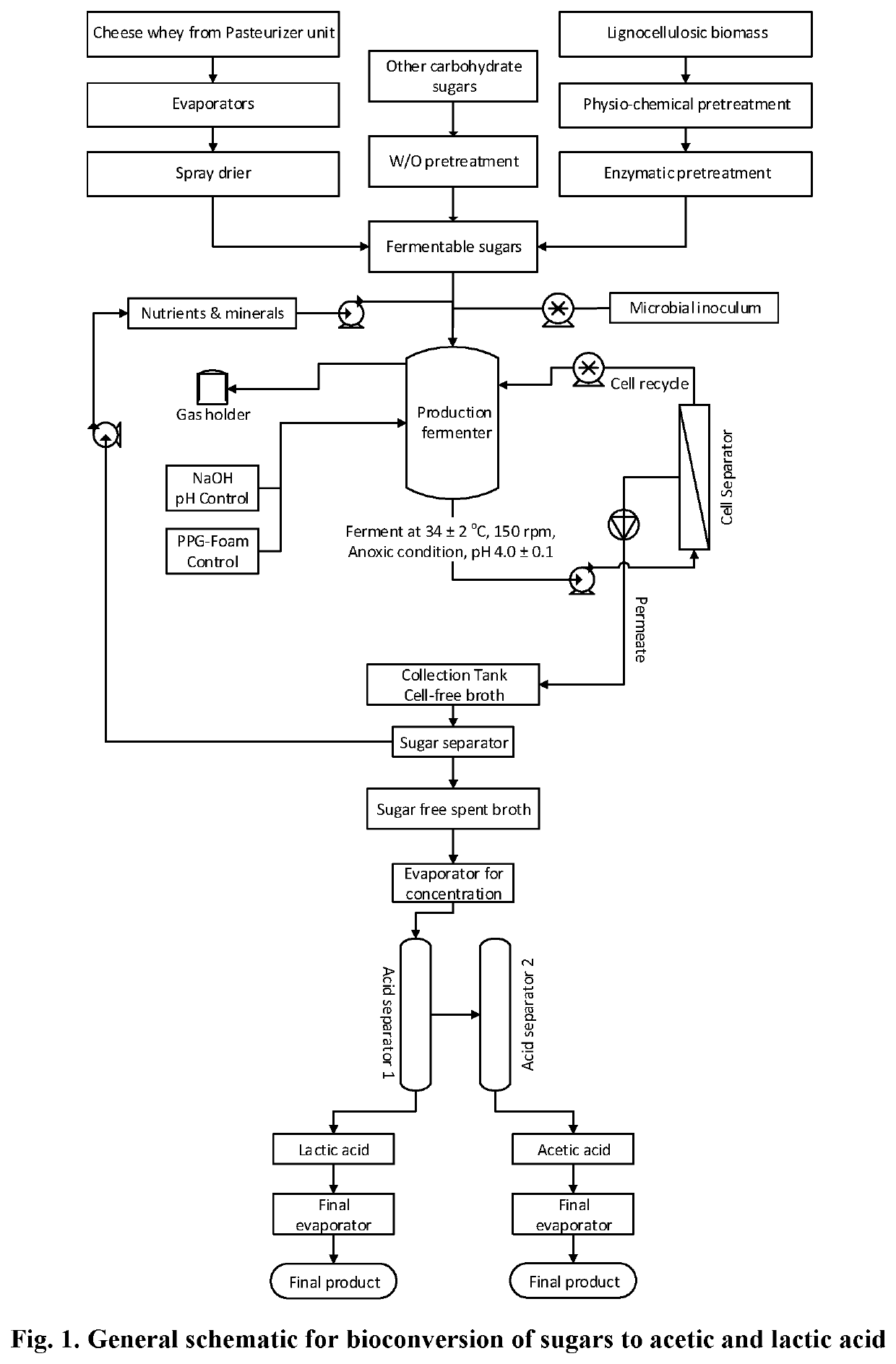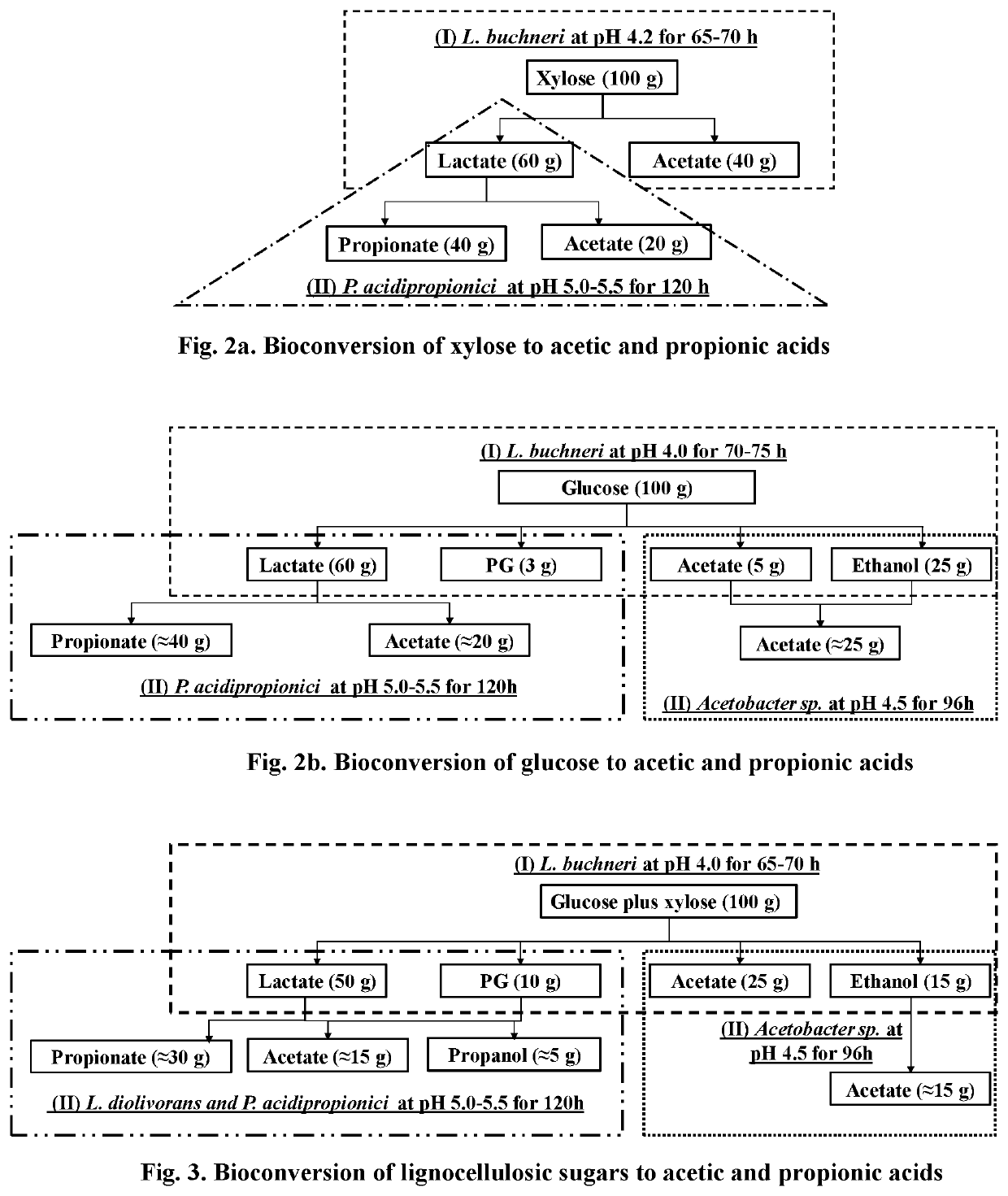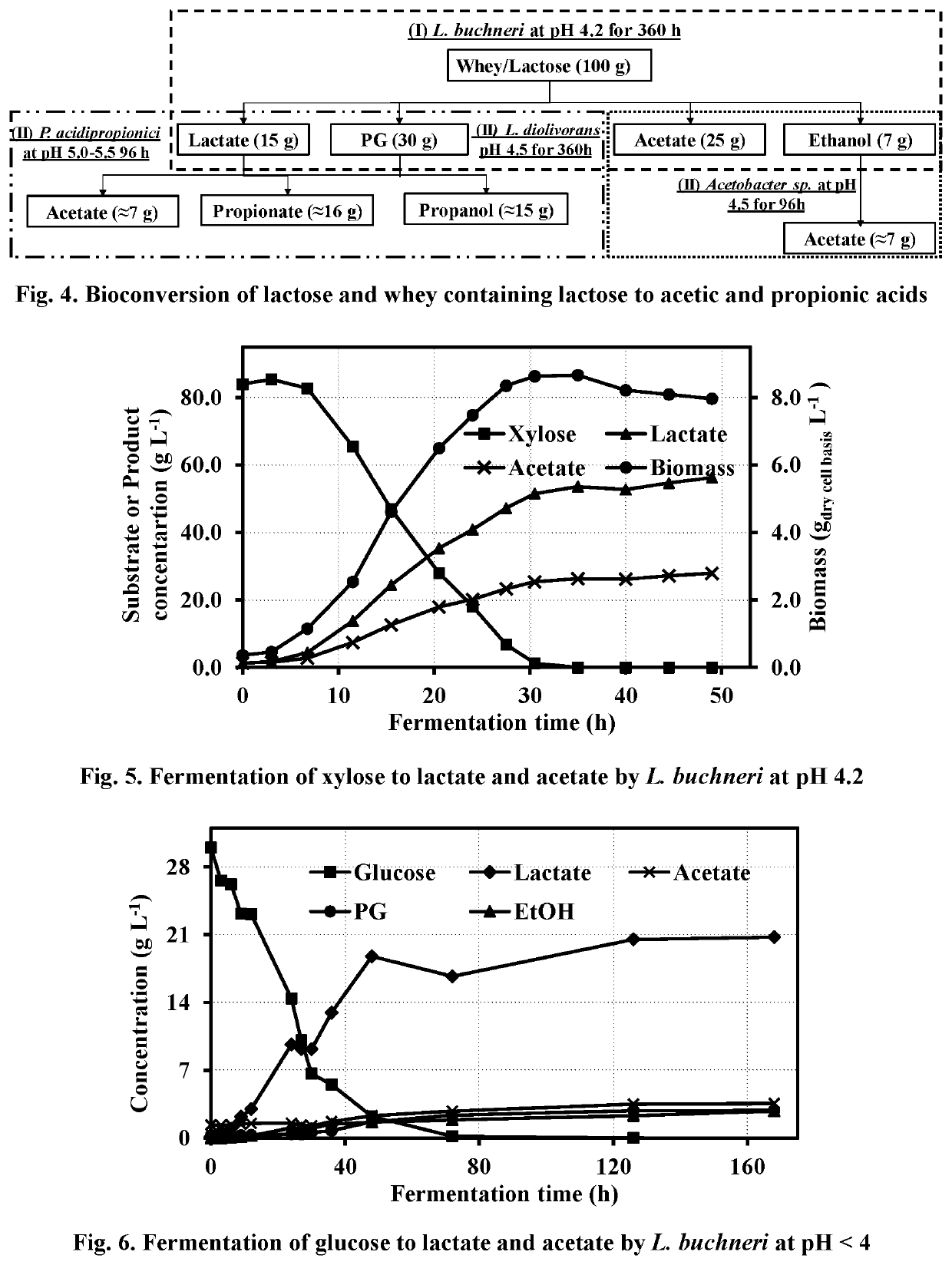Low pH process for fermentation of sugars from carbohydrates for the production of organic acids and biodegradable deicers
a technology of organic acids and biodegradable deicers, which is applied in the field of low ph fermentation process for the production of acetic acid and lactic acid, acetate and propionate road deicers, can solve the problems of low product acid concentration, low process economics, and high cost of acetic acid and deicers produced using the synthetic process. achieve the effect of much higher acid extraction efficiency
- Summary
- Abstract
- Description
- Claims
- Application Information
AI Technical Summary
Benefits of technology
Problems solved by technology
Method used
Image
Examples
example 1
Batch Fermentation of Xylose by L. buchneri
[0038]The fermentation studies were initially conducted with L. buchneri ATCC 4005 in batch serum bottles with a working volume of 0.05 L. The composition used was adopted from previous batch studies on L. buchneri reported in the literature (Elferink et al, 2001; Liu et al, 2008). The serum bottles were purged for 1-3 minutes with nitrogen gas of 99.95% purity, and capped using aluminum crimp caps with silicone rubber septa. The bottles were autoclaved for 15 minutes at 120° C., prior to inoculation. The inoculum size used was 3% throughout all the experiments. The serum bottles were incubated at 36° C. in an orbital shaker at 150 rpm for a period of 32-40 h.
[0039]A mid log phase culture of L. buchneri from serum bottle was used as a seed inoculum for bioreactor studies. A 1.3-L fermentor with a working volume of 1 L with automated pH and temperature controller (Bioflo 115, New Brunswick Scientific Inc.) was used for free cell fermentatio...
example 2
Continuous Fermentation of Xylose by L. buchneri Immobilized on Inorganic Fibers
[0041]A known weight of sterile alumina fibers (2% w / v) coated with chitosan was introduced in to a batch grown culture fed with 48 g L−1 of xylose. Fed batch was accomplished with addition of 25 g L−1 of xylose. The reactor was shifted to continuous mode after xylose concertation was reduced to less than 0.5%. The feed medium used for continuous immobilized cell operation consisted of 2.0 g L−1 of peptone, 3.0 g L−1 of yeast extract, 0.5 g L−1 of sodium acetate, 0.2 g L−1 of K2HPO4, 0.2 g L−1 of NH4H2PO4 and 0.2 g L−1 of MgSO4.7H2O. The feed flow rate was varied according to the run and required dilution rate was obtained using the Masterflex peristaltic pump. A sterile filter membrane cloth tied with cheesecloth was used in the suction line to prevent the loss of alumina fibers. Intermittent purging of nitrogen was done to prevent clogging at membrane. A total reaction volume of 0.9 L and pH of 4.22±0....
example 3
Fed-Batch Fermentation of Xylose by L. buchneri Immobilized on Cheese Cloth
[0043]Approximately 1.1 m2 of cheese cloth was wound around the propeller blades, sparging tube, and the sampling tube of the 2 L bioreactor. The reactor was charged with sterile medium, and inoculated with L. buchneri cells. The total working volume was 1.8 L. The fermentation pH was 4.2. The bacteria completely immobilized the cloth matrix resulting in a more clear fermentation broth, and eliminating the need for expensive filtration / clarification steps downstream. The stirring rate was reduced to 70 RPM or less to minimize shear and cell detachment. The results shown in FIG. 13 indicate that L. buchneri cells immobilized on cheese cloth tolerate high lactic and acetic acid concentrations of ˜60 g / L and 40 g / L respectively at a pH of 4.2. These high concentrations will reduce downstream processing costs in the separation and concentration of the acids.
PUM
| Property | Measurement | Unit |
|---|---|---|
| temperature | aaaaa | aaaaa |
| pH | aaaaa | aaaaa |
| temperature | aaaaa | aaaaa |
Abstract
Description
Claims
Application Information
 Login to View More
Login to View More - R&D
- Intellectual Property
- Life Sciences
- Materials
- Tech Scout
- Unparalleled Data Quality
- Higher Quality Content
- 60% Fewer Hallucinations
Browse by: Latest US Patents, China's latest patents, Technical Efficacy Thesaurus, Application Domain, Technology Topic, Popular Technical Reports.
© 2025 PatSnap. All rights reserved.Legal|Privacy policy|Modern Slavery Act Transparency Statement|Sitemap|About US| Contact US: help@patsnap.com



